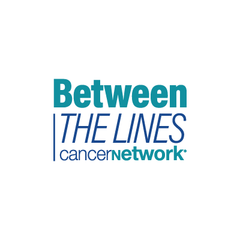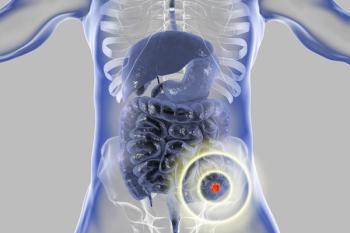
GALAXY: Cumulative ctDNA Clearance Rates by ACT Receipt
Experts describe cumulative ctDNA clearance rates in patients with stage I-IV disease who did or did not receive adjuvant chemotherapy in the GALAXY study.
Episodes in this series

Transcript:
Mark Lewis, MD: This is really interesting. This to me speaks to why adjuvant chemotherapy has been acceptable practice for years before the ability to demonstrate clearance of MRD [minimal residual disease]. Here, if I understood [Masahito] Kotaka [MD, PhD,] correctly, is looking at what happened between postoperative week 4 and week 24 to the signals in the ctDNA [circulating tumor DNA]. Clearance, of course, [is] going from positive to negative. You can see that with receipt of adjuvant therapy, the rate of that clearance was 68%. Fascinatingly, you also saw clearance in 10% of the patients who weren’t receiving adjuvant chemotherapy. I am curious to hear your speculation as to why that might be. To me this gets back to the trolley problem. When I first started thinking about adjuvant chemotherapy, I thought about it as an ethics issue. The trolley problem has you where, if you take action to save some people, you might harm 1 person. I’m not trying to be overdramatic, but these chemotherapy drugs that we give in this exact scenario can have irreversible toxicity. I was taught literally day 1 in fellowship to have the utmost respect for oxaliplatin. My faculty taught me that if you give this in the wrong amounts or for the wrong duration, the patient can have permanent nerve damage. In fact, there was a parallel talk at ASCO GI [American Society of Clinical Oncology Gastrointestinal Cancers Symposium] this year entitled, “The Deintensification of Oxaliplatin.”
What I’m getting at is there are 2 things we’re trying to do here. We’re trying to make sure that the people who really need adjuvant chemotherapy get it, and it’s kind of beautiful if that’s working the way we hope, that we can then quantify the disappearance of their MRD signal. But it’s also, in its best incarnation, potentially going to help us figure out who doesn’t need adjuvant chemotherapy at all. And I’m going to keep a close eye on that particular arm of the VEGA study. Again, those are going to be the postoperative ctDNA-negative [patients], who will then be randomized to observation. So watch that space. What are your takeaways here?
Stacey A. Cohen, MD: I also looked at that 10% of people who cleared their ctDNA and found it very interesting. I’d love to understand how we can do less and get better outcomes out of everything. Wouldn’t that be great? I think this also relates to the fact that we are taking this as implicit how this proprietary assay is done, but the reality is that that is dynamic as well. You already referenced 3 different studies setting the background for this that use 3 different assays, which each have their own quirks to them. I think part of the issue that we are going to have moving forward with ctDNA is it is a technology, and technology is not fixed, it changes, always hopefully for the better, but our studies are snapshots in time with the assay of the moment. So you wonder, does this mean that there is a threshold where we’re getting some false positives? Quantitatively I would love to know, are we seeing very low-level positives that cleared on their own? Or did those patients have high levels of detectable ctDNA that truly went away? I think that there are going to be so many ways to look at these data, since one of the benefits of Signatera is that you can get a quantitative readout in addition to the qualitative yes/no, positive/negative. I think that’s going to be a very interesting level of information to apply to this question of looking at chemotherapy benefit.
Mark Lewis, MD: Beautifully said, and you’re absolutely correct. Of the 3 studies I cited as background, it was only the [Thomas] Reinert, [PhD,] study from 2019 that was using the same proprietary tumor-informed assay that is being used in GALAXY. So there’s a lot of heterogeneity in the performance characteristics of these different measurements. In fact, I know that with this particular assay there’s a lot of caution about not drawing your first time point too close to surgery because the invasiveness of the operation liberates a lot of cell-free DNA that can confound the signal. There you actually might think that would be a false positive. So it’s fascinating to see how this space will evolve. And you’re right, this is going to happen I think in parallel with a lot of products that become available to oncologists to use in their patients.
Transcript edited for clarity.
Newsletter
Stay up to date on recent advances in the multidisciplinary approach to cancer.



















































































